|
|
General: CODIGO DA VINCI DECODIFICADO
Escolher outro painel de mensagens |
|
|
LEONARDO DAVINCI
LEON (LEON de la tribu de JUDA)
NARDO=UNGIMIENTO DE BETANIA
Busqueda para NARDO
 ¿PORQUE MARIA MAGDALENA UNGE LOS PIES DE JESUS EN
EL NARDO TIENE UN FUERTE NEXO CON MARIA MAGDALENA EN CONTEXTO AL UNGIMIENTO DE BETANIA
Entonces María tomó una libra de perfume de NARDO puro, de mucho precio, y ungió los pies de Jesús, y los enjugó con sus cabellos; y la casa se llenó del olor del perfume.
DAVID
VID/VINO/GRIAL
VIDA
1232. Salmos 128:3: Tu mujer será como VID que lleva fruto a los lados de tu casa;
Tus hijos como plantas de olivo alrededor de tu mesa.
GENESIS 49
49:8 Judá, te alabarán tus hermanos; Tu mano en la cerviz de tus enemigos; Los hijos de tu padre se inclinarán a ti.
49:9 Cachorro de león, Judá; De la presa subiste, hijo mío. Se encorvó, se echó como león, Así como león viejo: ¿quién lo despertará?
49:10 No será quitado el cetro de Judá, Ni el legislador de entre sus pies, Hasta que venga Siloh; Y a él se congregarán los pueblos.
¿PORQUE MARIA MAGDALENA UNGE LOS PIES DE JESUS EN 49:11 Atando a la vid su pollino, Y a la cepa el hijo de su asna, Lavó en el vino su vestido, Y en la sangre de uvas su manto. 49:12 Sus ojos, rojos del vino, Y sus dientes blancos de la leche. (LAODICEA=ILUMINACION=APOCALIPSIS 3:14. LA ILUMINACION en la tora tiene un fuerte contexto con MARIA MAGDALENA Y EL SANTO GRIAL. En la pelicula "EL CODIGO DA VINCI" cuando ROBERT LANGDON Y SOPHIE NEVEU van a la mansion del INGLES SIR LEIGH TEABING es increible que PREVIO A QUE ESTE ULTIMO le revele a SOPHIE el nexo de MARIA MAGDALENA CON LEONARDO DA VINCI le hace cerrar los ojos y le pregunta de cuantas copas habia en la mesa en la SANTA CENA y justamente ella responde que una sola. TEABING, un ingles, cuando SOPHIE abre los ojos (ILUMINACION) le muestra que en dicha pintura no hay ninguna copa y que el GRIAL ES JUSTAMENTE LA MUJER QUE ESTA A LA DERECHA DEL SEÑOR CON PELO ROJIZO. LA ILUMINACION EN LA TORA ESTA 100% INTERRELACIONADA CON LA ESPOSA DE NUESTRO SEÑOR JESUCRISTO)

SABADO=SABIDURIA=SO-PHI-A
SOPHIE NEVEU
SIR TEABING EN YOU TUBE
1. Cantares 1:12: Mientras el rey estaba en su reclinatorio, Mi NARDO dio su olor.
2. Cantares 4:13: Tus renuevos son paraíso de granados, con frutos suaves, De flores de alheña y NARDOs;
3. Cantares 4:14: NARDO y azafrán, caña aromática y canela, Con todos los árboles de incienso; Mirra y áloes, con todas las principales especias aromáticas.
4. Marcos 14:3: Pero estando él en Betania, en casa de Simón el leproso, y sentado a la mesa, vino una mujer con un vaso de alabastro de perfume de NARDO puro de mucho precio; y quebrando el vaso de alabastro, se lo derramó sobre su cabeza.
|
|
|
|
|
NUEVA YORK TIENE FUERTE RELACION CON LA MANZANA DORADA EN EL MARCO A LA LEYENDA DE ATLAS, EN EL CONTEXTO A LAS COLUMNAS DE HERCULES - EN ESTE MARCO, NUEVA YORK ES EL NEXO O EL "AGUJERO DE GUSANO" CON EL "CODIGO DA VINCI", EN EL MARCO AL CODIGO "APPLE" ENCONTRADO EN EL CRIPTEX - EN ESTE MARCO, ES OBVIO QUE 911 ES SINONIMO DEL CODIGO DA VINCI.
La Gran Manzana
De Wikipedia, la enciclopedia libre

Interpretación artística sobre la "Gran manzana" y una manzana corriente.
La Gran Manzana (del inglés The Big Apple) es un sobrenombre o apodo de la ciudad de Nueva York, Estados Unidos de América, aunque la mayoría de los neoyorquinos no lo usan de forma frecuente. Se hizo popular en los años 1920 gracias a John J. Fitz Gerald, periodista deportivo del diario New York Morning Telegraph. Su popularidad actual se debe a una campaña publicitaria de la oficina de convenciones y turismo de Nueva York (del inglés New York Convention and Visitors Bureau).
§Historia del término[editar]
Aunque la historia del término “la Gran Manzana” se consideró un misterio[1] durante un tiempo, la investigación en las pasadas dos décadas, especialmente por parte del etimólogo aficionado Barry Popik[2] y el profesor Gerald Cohen de la Missouri University of Science and Technology,[3] ha contribuido a aclarar la historia del término. Antes de su trabajo hubo una serie de etimologías erróneas[4] de las cuales la más absurda fue aquella que afirmaba que el sobrenombre proviene de un burdel neoyorquino a cuya madame se le conocía por el sobrenombre de Eva.[5] Este extremo[6] ha sido corregido en la página de Internet con información más precisa.[7]
La Gran Manzana se popularizó como sobrenombre de la ciudad de Nueva York gracias a John J. Fitz Gerald en un artículo de una edición del New York Morning Telegraph en los años 20 en referencia a las carreras de caballos en Nueva York. La primera vez que se utiliza el término para denominar a la ciudad de Nueva York fue el 3 de mayo de 1921.
J. P. Smith, junto a Tippity Witchet y demás pertenecientes de la cuadra L. T. Bauer, se espera que salgan para “la Gran Manzana” mañana tras una próspera campaña primaveral en Bowie y Havre de Grace.[8]
Fitz Gerald se refirió a “la Gran Manzana” posteriormente de forma frecuente.[9] Explicó su uso el 18 de febrero de 1924 en una columna bajo el título “Alrededor de la Gran Manzana” (del inglés "Around the Big Apple"):
La Gran Manzana. El sueño de todo mozo de cuadras que haya montado un purasangre y la gran meta de todos los jinetes. Solo hay una gran manzana. Y esa es Nueva York.
Dos manos oscuras de cuadra guiaban un par de purasangres alrededor de áreas de calentamiento de cuadras adyacentes en Fair Grounds, Nueva Orleáns inmersos en una conversación discontinuada.
"¿Hacia donde partes?" pregunta uno.
"De aquí nos dirigimos a la Gran Manzana," responde el otro de forma orgullosa.
"Sí, pues casi mejor que comiences a dar de comer a esos esqueléticos porque si no lo único que te vas a llevar de la manzana serán las pepitas" fue la aguda réplica instantánea.[10]
La referencia de Fitz Gerald sobre manos oscuras de cuadra sugiere que el término puede ser originario de la cultura afroamericana. Esta teoría se refuerza gracias al Chicago Defender, un periódico afro americano de tirada nacional. “Ragtime” Billy Tucker, un artista de vaudeville/ragtime y escritor de Defensor (del inglés Defender), usó el término "gran manzana" para referirse a Nueva York al escribir sobre carreras de caballos el 16 de septiembre de 1922:
Confio en que tu viaje a 'la gran manzana' (Nueva York) haya sido un gran éxito y solo deseo el poder haber estado allí junto a ti.[11]
El mismo escritor había usado previamente el término "Gran Manzana" como referencia a una ciudad diferente, Los Ángeles. Este ejemplo, del 15 de mayo de 1920 es el primer uso conocido de la "Gran Manzana" para referirse a una ciudad. Es posible que el periodista entendiera que el término "Gran Manzana" era apropiado para cualquier ciudad grande:
Queridos Pal y Tony: No, A Ragtime Billy Tucker no se lo ha tragado la tierra, sigue en la 'Gran Manzana', Los Ángeles.[11]
A finales de los años 20, los periodistas de Nueva York (además de Fitz Gerald) comenzaron a usar el término "Gran Manzana" en contextos diferentes al de carreras de caballos.[12] "La Gran Manzana" (en inglés The Big Apple) fue una famosa canción[13] y baile[14] de los años 30. Walter Winchell y otros escritores continuaron el uso del término en los años 40 y los años 50.[15]

Esquina suroeste de la calle "West 54th Street" y Broadway.
En los años 60 el término "la Gran Manzana" se quedó anticuado como sobrenombre de New York.[16] Sin embargo, a comienzo de los años 70 la Oficina de Convenciones y Turismo de Nueva York (del inglés "the New York Convention and Visitors Bureau"), hoy en día "NYC & Company", la organización oficial de Nueva York en temas de imagen y turismo,[17] con su presidente, Charles Gillett, a la cabeza, comenzó a promocionar "la Gran Manzana" como el sobrenombre de la ciudad.[18] Y desde entonces ha ganado en popularidad. El alcalde Rudolph W. Giuliani firmó en 1997 un decreto para calificar la esquina suroeste de la calle "West 54th Street" y Broadway, esquina en la que John J. Fitz Gerald residiera entre 1934 y 1963, como "La esquina de la Gran Manzana" (del inglés "Big Apple Corner").[19]
Desde 1990, el equipo de béisbol de las Grandes Ligas, los New York Mets, posee un artefacto llamado "Home Run Apple" el cual hace efectos audiovisuales toda vez que algún jugador de los Mets conecta un jonrón en el ya demolido Shea Stadium. En el nuevo estadio, el Citi Field, todavía sigue vigente dicho artefacto.[20]
§Otras ciudades[editar]
Big Apple es de hecho el nombre literal de una localidad en el condado de Colborne, Ontario, Canadá.
Manhattan, Kansas, se denomina a sí misma "La Pequeña Manzana” (del inglés "The Little Apple") en sus campañas publicitarias, mientras que Minneapolis, Minnesota ha adoptado el sobrenombre "La Minimanzana" (del inglés "The Mini-Apple").
En la película Evita, Buenos Aires se sobrenombra como "B.A., Buenos Aires, Gran Manzana" (del inglés "B.A., Buenos Aires, Big Apple") en la canción Eva, Beware of the City (al castellano "Eva, ten cuidado en la ciudad"). Esta referencia fue inventada por el lírico Tim Rice.
Ciudades con sobrenombres parecidos[21] incluyen:
- El Gran Albaricoque (del inglés The Big Apricot) - Metrópolis (cómics), District of Columbia, Estados Unidos
- El Gran Melocotón (del inglés The Big Peach) - Atlanta, Georgia, Estados Unidos
- La Gran Relajación (del inglés The Big Easy) - Nueva Orleans, Luisiana, Estados Unidos
- La Pequeña Manzana (del inglés The Little Apple) - Manhattan, Kansas, Estados Unidos
- La Gran Naranja (del inglés The Big Orange) - Tel Aviv, Israel
- La Gran Guayaba (del inglés The Big Guava) - Tampa, Florida, Estados Unidos
- El gran Durián (del inglés The Big Durian) - Jakarta, Indonesia
- La Gran Lima (The Big Lime) - Key Largo, Florida
- El Gran Scrapple (The Big Scrapple) - Filadelfia
- La Gran D (The Big D) - Dallas, Texas
- EL Gran Burrito (The Big Burrito)- Overland Park, Kansas
- La Gran Cebolla (The Big Onion) - Chicago
- El Gran Tomate (The Big Tomato) - Sacramento, California
- El Gran Mango (The Big Mango) - Bangkok. El término es también usado para El Cairo. Cairo y New York Son ambas ciudades hermanas.[22]
- El Gran Chile (The Big Chilli) - Bangkok[23]
- La Gran O (The Big O) - Omaha
- La Gran Lichi (The Big Lychee)El - Hong Kong
- El Gran Schnitzel (The Big Schnitzel) - Vienna
|
|
|
|
WALL STREET / S-TREE-T
STREET=CAMINO
TREE=ARBOL
7. Génesis 3:1: Pero la serpiente era astuta, más que todos los animales del campo que Jehová Dios había hecho; la cual dijo a la mujer: ¿Conque Dios os ha dicho: No comáis de todo árbol del huerto?
8. Génesis 3:2: Y la mujer respondió a la serpiente: Del fruto de los árboles del huerto podemos comer;
9. Génesis 3:3: pero del fruto del árbol que está en medio del huerto dijo Dios: No comeréis de él, ni le tocaréis, para que no muráis.
10. Génesis 3:6: Y vio la mujer que el árbol era bueno para comer, y que era agradable a los ojos, y árbol codiciable para alcanzar la sabiduría; y tomó de su fruto, y comió; y dio también a su marido, el cual comió así como ella.
11. Génesis 3:8: Y oyeron la voz de Jehová Dios que se paseaba en el huerto, al aire del día; y el hombre y su mujer se escondieron de la presencia de Jehová Dios entre los árboles del huerto.
12. Génesis 3:11: Y Dios le dijo: ¿Quién te enseñó que estabas desnudo? ¿Has comido del árbol de que yo te mandé no comieses?
13. Génesis 3:12: Y el hombre respondió: La mujer que me diste por compañera me dio del árbol, y yo comí.
14. Génesis 3:17: Y al hombre dijo: Por cuanto obedeciste a la voz de tu mujer, y comiste del árbol de que te mandé diciendo: No comerás de él; maldita será la tierra por tu causa; con dolor comerás de ella todos los días de tu vida.
15. Génesis 3:22: Y dijo Jehová Dios: He aquí el hombre es como uno de nosotros, sabiendo el bien y el mal; ahora, pues, que no alargue su mano, y tome también del árbol de la vida, y coma, y viva para siempre.
16. Génesis 3:24: Echó, pues, fuera al hombre, y puso al oriente del huerto de Edén querubines, y una espada encendida que se revolvía por todos lados, para guardar el camino del árbol de la vida.
|
|
|
|
|
|
|
|
11. Proverbios 25:11: MANZANA de oro con figuras de plata Es la palabra dicha como conviene.
12. Cantares 2:5: Sustentadme con pasas, confortadme con MANZANAs; Porque estoy enferma de amor.
13. Cantares 7:8: Yo dije: Subiré a la palmera, Asiré sus ramas. Deja que tus pechos sean como racimos de vid, Y el olor de tu boca como de MANZANAs,
|
|
|
|
|
11. Proverbios 25:11: MANZANA de oro con figuras de plata Es la palabra dicha como conviene.
12. Cantares 2:5: Sustentadme con pasas, confortadme con MANZANAs; Porque estoy enferma de amor.
13. Cantares 7:8: Yo dije: Subiré a la palmera, Asiré sus ramas. Deja que tus pechos sean como racimos de vid, Y el olor de tu boca como de MANZANAs,
|
PENTAGONO = VENUS = VENECIA = JUAN MARCOS (SERIE DE FIBONACCI)
|
|
|
|
|
|
| Reply |
Message 5 of 5 on the subject |
|
|
|
|
|
|
|
|
|
'G', the letter of 'God', the 'Great Architect', the 'Geometer', for G is the 7th letter -
The Square and Compass is aligned horizontally to revere the direction in which the Sun as well as the 'Sun behind the Sun' - the Star of Set, or Sirius which is also included in the layout as the White House is not only at the left side of the Compass, but it is at the bottom of the averse pentagram aligned with the North.
The Star Sirius is a binary star, and the lesser star - Sirius B - is depicted as the smaller star to the bottom left; 'The Pentagon'. Even the hieroglyph of Sirius contains the predominant elements of the architecture;
 the Obelisk (Washington Monument), the 5 pointed star, and the Dome (The Capital Building). the Obelisk (Washington Monument), the 5 pointed star, and the Dome (The Capital Building).
11. Proverbios 25:11: MANZANA de oro con figuras de plata Es la palabra dicha como conviene.
|
|
|
|
|
'G', the letter of 'God', the 'Great Architect', the 'Geometer', for G is the 7th letter -
The Square and Compass is aligned horizontally to revere the direction in which the Sun as well as the 'Sun behind the Sun' - the Star of Set, or Sirius which is also included in the layout as the White House is not only at the left side of the Compass, but it is at the bottom of the averse pentagram aligned with the North.
The Star Sirius is a binary star, and the lesser star - Sirius B - is depicted as the smaller star to the bottom left; 'The Pentagon'. Even the hieroglyph of Sirius contains the predominant elements of the architecture;
 the Obelisk (Washington Monument), the 5 pointed star, and the Dome (The Capital Building). the Obelisk (Washington Monument), the 5 pointed star, and the Dome (The Capital Building).
11. Proverbios 25:11: MANZANA de oro con figuras de plata Es la palabra dicha como conviene.
PENSILVANIA / FILADELFIA (MANZANA DE ORO)
PEN=NUMERO CINCO
SILVANIA / SILVER / PLATA / ARGENTUM ("EXPERIMENTO FILADELFIA"= "AGUJERO DE GUSANO" ="MAQUINA DEL TIEMPO")
|
|
|
|
|
|
De: OSCARJ |
Enviado: 21/03/2015 16:07 |
|
ALEGRE Y DIVERTIDO SABADO
GRACIAS POR TUS APORTES
Y
BONITA COMPAÑIA
|
| |
|
|
|
|
|
|
| Reply |
Message 519 of 519 on the subject |
|
|
|
EL CONEJO ES SIMBOLO DE FERTILIDAD Y SE REPRODUCE CON EL NUMERO DE ORO
LA LEY DE LA RELATIVIDAD DE EINSTEIN TIENE QUE VER CON LA RELATIVIDAD DEL TIEMPO EN FUNCION A LA MASA Y LA VELOCIDAD DE LA LUZ
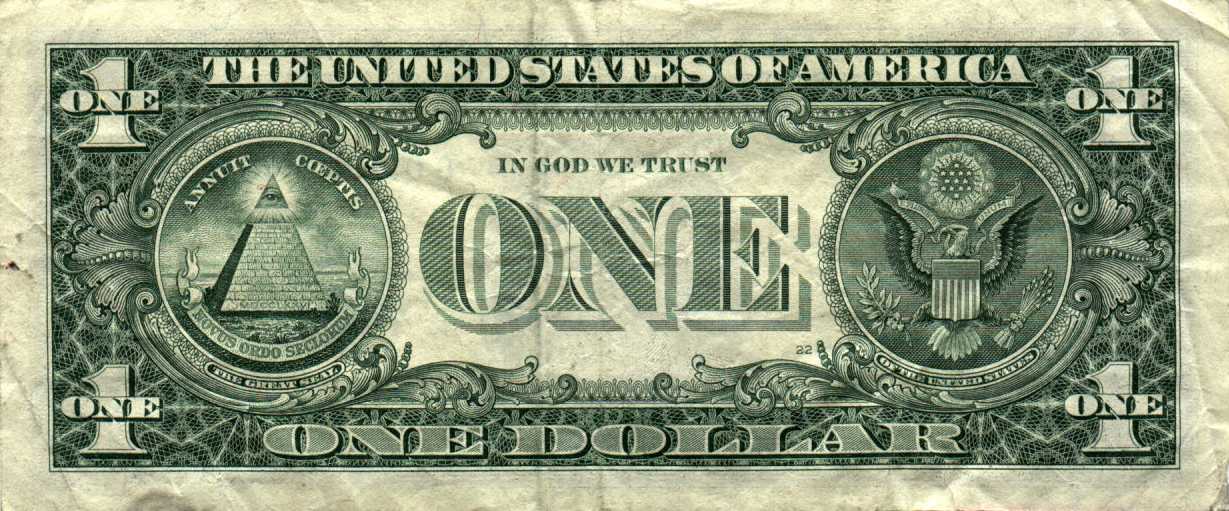
OJO DE RA=LEY DE LA RELATIVIDAD DE EINSTEIN
EL DOLAR MISMO ESTA CONECTADO CON LA "MAQUINA DEL TIEMPO"
|
 First First  Previous 2 to 2 of 2 Next Previous 2 to 2 of 2 Next  Last Last  |
|
|
|
|
|
correctoresenlared.blogspot.com/2011/11/llegue-vi-venci.html
1 de nov. de 2011 - Sin embargo, es frecuente que se cometan incorrecciones al escribirla: «Como dice el proverbio romano, Veni, vidi, vinci: llegó vió y venció»; ...
www.hispanatolia.com/seccion/2/.../-veni-vidi-vici-dijo-cesar-en-turquia
17 de abr. de 2012 - ... quien dijo que los fondos recaudados por el proceso en campañas para la ... "Veni, vidi, vici" es una frase histórica acuñada por el general ...
www.asinorum.com/la-frase-veni-vidi-vici/789/
29 de dic. de 2007 - Veni, vidi, vici: Llegué, vi, vencí. (Julio César, pronunciada el 44 a.C.) Frase aplicable a: La frase es lo suficientemente compleja como para no ...
latin.dechile.net/?Cesar
... unos que dicen que la dijo en griego); Fere libenter homines, id quod volunt, ... Veni, vidi, vici - Vine, vi y vencí (Exclamación de Cayo Julio César, al llegar a ...
www.tesorillo.com/preimperio/julio_cesar/1julio_cesar.htm
... Pompeyo, quien para entonces había cambiado de bando, era técnicamente ... al Senado, dijo entonces la famosa frase "veni, vidi, vinci"" (llegué, vi y vencí), ...
CONEXION VINCI / VENCEDOR / JACOB / ISRAEL / VENECIA
|
|
|
|
|
Vinci, Leonardo da
(1452-1519) Pintor italiano. La fama y la calidad de la obras pictóricas de da Vinci (La Santa Cena, La Gioconda, La Virgen de las rocas, Santa Ana, etc.), no oscurecen su gloria y su inmenso mérito como arquitecto, escultor e investigador científico. Da Vinci es considerado una figura típica del Renacimiento. Como teórico marcó el paso de los constructores del Quattrocento al clasicismo. |
|
|
|
|
|
FLEUR DE LIS= CODIGO DA VINCI= ESCORPION= MANZANA DORADA (MITO DE HERCULES)
EL ORO ES LA MANZANA DORADA. ESTO JAMAS LO VAN A ENTENDER LOS CODICIOSOS DE DOLARES.
EN SI EL "OJO DE RA", NO SOLO ES UNA REFERENCIA A RA-QUEL, LA MADRE DE BENJAMIN, SINO QUE TAMBIEN A RA-HAB, LA MADRE, SI MAL NO RECUERDO DE BOAZ, SEGUN LA GENEALOGIA DE MATEO DE CRISTO. EN ESTE MARCO, LA COLUMNA DE JACHIN ES UNA REFERENCIA A RA-HAB. (1 DE REYES 7:22,23)
RA-QUEL= RA-HAB= OJO DE RA
|
|
|
|
|

The letter G symbol of freemasonry traces back to the Hebrew letter gimel and interestingly links to the serpent as well. It is said that the letter G also represents the ouroboros, the snake eating it’s tail which represents immortality/resurrection.
MARY MAGDALENE=RESURRECTION =JOHN 20

LA SERPIENTE QUE SE MUERDE LA COLA SIMBOLIZA A LA VIDA ETERNA Y AL LINAJE DE CRISTO Y MARIA MAGDALENA. ESE ES SU MENSAJE ESOTERICO. ESO EXPLICA LA RELACION CON LA MAQUINA DEL TIEMPO
Ecuaciones de Einstein
Las Ecuaciones de Einstein son el centro de la relatividad general. Proporcionan una formulación precisa, utilizando el lenguaje de las matemáticas, de la relación entre la geometría del espacio-tiempo y las propiedades de la materia.

Distancias correspondientes a 30 grados a diferencia de longitud, en diferentes latitudes, sobre la superficie de la tierra.
Estas ecuaciones se formulan utilizando el lenguaje de la geometría riemanniana, en la que las propiedades geométricas de un espacio (o espacio-tiempo) son descritas por una cantidad llamada métrica. La métrica codifica la información necesaria para calcular las nociones geométricas fundamentales de distancia y ángulo en un espacio curvo (o espacio-tiempo).
Una superficie esférica como la de la Tierra proporciona un ejemplo sencillo. La ubicación de cualquier punto de la superficie puede ser descrito por dos coordenadas geográficas: latitud y longitud. Sin embargo, a diferencia de las coordenadas cartesianas del plano, las diferencias de coordenadas no son lo mismo que las distancias en la superficie, tal y como se muestra en el diagrama de la derecha: para alguien en el ecuador, moverse hacia el Oeste por 30 grados de longitud (línea magenta) corresponde a un distancia de aproximadamente 3300 kilómetros; para alguien mucho más al norte, a una latitud de 55 grados, al moverse 30 grados de longitud hacia el oeste (línea azul) se cubre una distancia de sólo 1900 kilómetros. Las coordenadas, por lo tanto, no proporcionan suficiente información para describir la geometría de una superficie esférica o la geometría más complicada del espacio-tiempo: se necesita información adicional para convertir las diferencias de coordenadas a distancias reales. Este es, precisamente, la información codificada en la métrica: se trata de una función definida en cada punto de la superficie (o espacio, o espacio-tiempo) que describe hasta qué punto el espacio se curva o estira en el entorno de ese punto. Todas las demás cantidades que son de interés en la geometría, tales como la longitud de cada curva, o el ángulo en que dos curvas se encuentran, se puede calcular a partir de esta función métricas.[15]
La cantidad de curvatura que hay en cada punto de un espacio (o espacio-tiempo) determina la curvatura del espacio. Más precisamente, la función métrica y la rapidez con que cambia de un punto a otro se puede utilizar para definir una cantidad geométrica llamada Tensor de curvatura de Riemann, que describe exactamente la forma en que el espacio (o espacio-tiempo) es curva en cada punto . En la relatividad general, la métrica y el tensor de curvatura son las cantidades definidas en cada punto en espacio-tiempo. Además, el contenido de materia del espacio, como se ha indicado, define otra cantidad, el tensor energía-impulso T, y el principio de que "el espacio-tiempo le dice a la materia cómo moverse, y la materia le dice al espacio-tiempo cómo curvarse", significa que estas cantidades deben estar relacionados de alguna manera. Einstein formuló esta relación usando el tensor de curvatura y la métrica para definir otra cantidad geométrica G, que ahora se conoce como el tensor de Einstein, que describe algunos aspectos de la forma en la que el espacio-tiempo se curva. La ecuación de Einstein entonces se establece que

es decir, hasta un constante múltiple, la cantidad G (que mide la curvatura) se equipara con la cantidad T (que mide el contenido de materia). Las constantes que participan en esta ecuación reflejan las diferentes teorías que se usaron para deducirlas: G es la Constante de gravitación universal que ya está presente en la gravedad de Newton;c es la velocidad de la luz, la clave constante de la relatividad especial, y π es una de las constantes básicas de la geometría. La aparición de π en la ecuación se asocia con la zona (4 π) de la unidad de materia, mientras que las constantes c y G se necesitan para convertir la cantidad T (que tiene unidad físicas) en unidades puramente geométricas.
Esta ecuación es referida a menudo en plural como ecuaciones de Einstein , puesto que las cantidades G y T son determinados por un conjunto de diez funciones de las coordenadas del espacio, y las ecuaciones equiparan cada una de estas funciones componentes. Sin embargo, a causa de la libertad de cambiar las cuatro coordenadas en las que las ecuaciones se expresan, en realidad hay sólo seis ecuaciones físicas que deben cumplirse en cada punto en espacio.[16] describe una geometría particular de el espacio y el tiempo. Por ejemplo, la primera solución que se encontró, apenas un mes después de que Einstein publicara su teoría, fue la métrica de Schwarzschild, que describe la geometría esférica alrededor de una única masa no giratoria, como una estrella o un agujero negro, mientras que la solución de Kerr describe un agujero negro giratorio. Otras soluciones pueden describir una onda gravitacional o en el caso de la más compleja solución de la Métrica de Friedman-Lemaître-Robertson-Walker, la expansión del universo. La solución más sencilla es por supuesto el espacio-tiempo plano o espacio de Minkowski, que es el espacio-tiempo descrito por la relatividad especial.[17]
NOTABLE LA RELACION DE G, CON EL NUMERO PI=3.1416..
PYRAMID / MARY
MARY MAGDALENE DAY=22/7 =3.1416 =EXPERIMENTO FILADELFIA (MAQUINA DEL TIEMPO= "AGUJERO DE GUSANO")
LA MISMA SANTA CENA ES UNA REFERENCIA A LA "MAQUINA DEL TIEMPO" EN EL MARCO A SU RELACION CON LAS 12 HORAS DEL RELOJ, 12 CONSTELACIONES DEL ZODIACO, 12 CICLOS LUNARES, 12 CICLOS PRECESIONALES, ETC,ETC
martes, 20 de marzo de 2012
De izquierda a derecha: Galileo Galilei, Marie Curie, J. Robert Oppenheimer, Isaac Newton, Louis Pasteur, Stephen Hawking, Albert Einstein, Carl Sagan, Thomas Edison, Aristoteles, Neil deGrasse Tyson, Richard Dawkins y Charles Darwin.
EL ORO REFINADO ES EL GRIAL MISMO
714. Mateo 23:17: ¡Insensatos y ciegos! porque ¿cuál es mayor, el ORO, o el templo que santifica al ORO?
|
|
|
|
|
  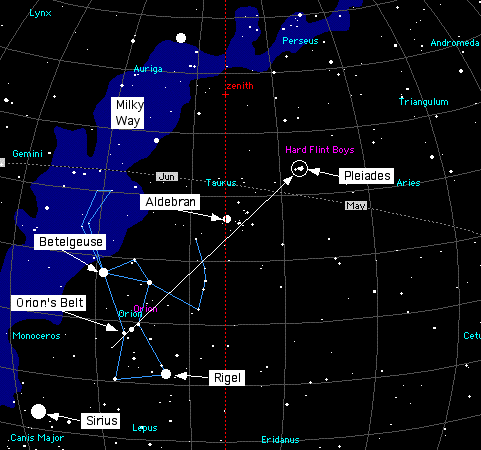
ISRAEL = JACOB= VENCEDOR= ESTRELLA DE DAVID O 6 PUNTAS= RELOJ
ISRAEL = ISIS - RA- ELOHIM
IS-RA-EL =(OJO DE RA= OJO DE RA-QUEL) = NACIMIENTO DE BENJAMIN =LOBO=PERRO= CHACAL = CAN MAYOR = SIRIO = GOD= DOG = GOLD (MANZANA DE ORO) =7-4 =4-7 (CUARTO MANDAMIENTO CON REFERENCIA AL SEPTIMO DIA)
EL MISMO SIGNO PESO, QUE TIENE REFERENCIA A LA SERPIENTE O LETRA S, TIENE NEXO CON EL SABADO, OSEA EL SEPTIMO DIA.
EL UNICO SABADO QUE RESPONDE EL PATRON 4-7 (CUATRO FASES DE SIETE DIAS) ES EL LUNAR, CODIFICADO EN LA MISMA SANTA CENA, DISEÑADA EN FUNCION A LAS 12 TRIBUS DE ISRAEL, EN FUNCION A SU UBICACION ALREDEDOR DEL TABERNACULO. (ESTE- OESTE- NORTE -SUR)
LA MISMA SANTA CENA ES UNA REFERENCIA A LA "MAQUINA DEL TIEMPO" EN EL MARCO A SU RELACION CON LAS 12 HORAS DEL RELOJ, 12 CONSTELACIONES DEL ZODIACO, 12 CICLOS LUNARES, 12 CICLOS PRECESIONALES, ETC,ETC.
EN REALIDAD EL SEPTIMO DIA DE LA CREACION, QUE ES EL OCTAVO TENIENDO EN CUENTA A LA LUNA, ES UNA REFERENCIA AL JUBILEO, OSEA EL AÑO 50 (SIETE AÑOS SABATICOS MAS UNO=OCHO), QUE ERA EL AÑO DE LA LIBERACION O EL AÑO DE LA LIBERTAD (LEVITICO 25). EL CICLO DE SIRIO B, TIENE RELACION CON EL NUMERO 50.
martes, 20 de marzo de 2012
De izquierda a derecha: Galileo Galilei, Marie Curie, J. Robert Oppenheimer, Isaac Newton, Louis Pasteur, Stephen Hawking, Albert Einstein, Carl Sagan, Thomas Edison, Aristoteles, Neil deGrasse Tyson, Richard Dawkins y Charles Darwin.
|
|
|
|
|
The Diana event has its roots in the ancient relationship between the city of Paris and the goddess Isis. As the old story goes, Isis arrived by boat, at an island in the Seine. Paris is laid out as an invisible Temple to Isis. The alignment of the Champs Elysées, the historic axis of the city, is to the rising of Sirius. One might even say that Paris itself is the Boat of Isis. Isis is the Goddess of Ten Thousand Names. She contains within herself, as it were, all of the other archetypal projections of the divine feminine. So we see that the statues from ancient Egypt of Isis with her son Horus are exactly mirrored by later Christian statues of Mary and Jesus. France is the focal point of the Black Madonnas; these mysterious statues of the Madonna are related to the ancient Isis tradition. Chartres Cathedral for example is built on a grotto which already contained a black image of the Madonna and Child prior to Christian times. The Madonna is Isis.
Quote:
| In the great cathedral of Chartres, the black madonna statue I described above dates to the thirteenth century. A second madonna statue exists in the underground crypt next to an ancient and sacred well. The story is told that the Christian missionaries first coming to the area of Chartres found the indigenous peoples worshipping a statue of a woman giving birth. The missionaries concluded this was a "pre-figuration" of the Virgin Mary and that the people were already Christians — they just didn't know it. A sanctuary was built around the original mother statue. She continued as the center piece of each succeeding church including the present cathedral built in the 1100's. |
Paris itself is a Temple to Isis, or the star Sirius. Where there is a Temple, a space is created for the performance of ritual. The Arc de Triomphe was conceived by Napoleon. It was located at the Place de l'Etoile. The place of the Star. Which star? Sirius of course.  Arcana 17: The Star card represents Isis, and shows Sirius:
Quote:
| The resplendent star is Sirius, the particular star of Isis |
Napoloeon conceived the Arc de Triomphe as an integral part of the city-as-Temple-to-Isis. It is located on the alignment to Sirius, at the Place de l'Etoile. Or, to be strictly accurate, the place which used to be called Place de l'Etoile. The correct name now is Place de Charles de Gaulle. Depicted on the wall of the Arc de Triomphe, as we have seen courtesy of Bauval and Hancock in Talisman, is Napoleon being crowned by Cybele. She is known as Magna Mater, or Great Mother, or Alma Mater. 
Quote:
| In Rome, Cybele was known as Magna Mater ("Great Mother"). |
Quote:
| Alma mater (UK /ˈælmə ˈmeɪtər/ or US /ˈɑːlmə ˈmɑːtər/; Latin: "nourishing mother") was used in ancient Rome as a title for various mother goddesses, especially Ceres or Cybele,[1] |
Which brings us back to Morrissey....  Beneath the Arc de Triomphe is an eternal flame, on the Tomb of the Unknown Soldier  There is also an eternal flame in the torch of the Statue of Liberty, both at the entrance to the harbour in New York, and at the entrace to the Avenue de New York, in Paris. We have seen that this statue was originally conceived as Isis, and was a Masonic endeavour. (And an eternal flame on the grave of JFK  ) So it is clear to eyes-that-see that Paris is laid out as a Temple to Isis, in time and space, and that the Arc de Triomphe is a major component of this. It is a gate, or portal, which opens up onto the Champs D'Elyséess, of Fields of the Dead, aligned to Sirius, the star of Isis, she of ten thousand names. The names undoubtedly include Diana, who is an aspect of this archetype of the divine feminine.But can we identify an even more specific connection between the goddess Diana, the Arc de Triomphe and Napoleon?The ancient Roman festival dedicated to Diana was held in August, either for three days August 13 – 15, or at the full moon. The festival was known as Nemoralia.
Quote:
| The festival of Nemoralia (aka Festival of Torches) was celebrated by the ancient Romans either on 13–15 August or on the August Full Moon, in honor of the goddessDiana (see Diana Nemorensis). This festival was later adopted by Catholics as The Feast of the Assumption. |
This is a fascinating item: the Feast of the Assumption of the Virgin Mary is one of the most important dates in the catholic calendar, and indeed in the French calendar, and takes place on August 15. But the origin of this day is that it has been taken over from the roman festival of Nemoralia, Festival of Torches, in honor of Diana. More here.The climax of the festival of Nemoralia was the final day, August 15. This is Diana's feast day. August 15. Napoleon was born August 15, 1769.The Arc de Triomphe was his conception, and he arranged it so that the first stone was laid on his birthday, August 15 1806!(Note: in an earlier post I had quoted this day incorrectly as August 6. It was not. It was August 15, 1806)The first stone of the Arc de Triomphe was laid on the birthday of Napoleon, and the feast day of the goddess Diana, when torches were lit in her honour. We are looking here at a story which does not have a defined beginning. It has its roots in antiquity, with the coming of Isis to Paris in her boat. Paris is laid out as a Temple to the goddess, aligned to her star Sirius. Napoleon is born, and brings the Temple to a new degree of splendour by installing the Gate, or Portal, or Arch of Triumph, on the Place of the Star, aligned to the Star. In the tarot, we we've seen, the 17th card of the Major Arcana, the Star, represents an aspect of Isis. She is also depicted in the 2nd card of the Major Arcana: The High Priestess. With the moon on her headdress, and under her feet, she sits between twin pillars.  So, how are we going: Napoleon conceived of the twin pillars of the Arc de Triomphe, sited on the Place de l'Etoile, the Place of the Star, providing a gateway to the Champs d'Elysées, the Fields of the Dead, aligned to Sirius, and laid the first stone on his birthday, the climax of Nestoralia, the festival of torches held to honour Diana. Now: where a Temple is laid out, a space is prepared for the performance of ritual. The ritual is, naturally, always, the symbolic death and resurrection of the deity to whom the Temple is dedicated. So Paris, the Temple of Isis, is also a space prepared for a ritual: the Death of the goddess Diana, as Isis. They marked the location with a torch.  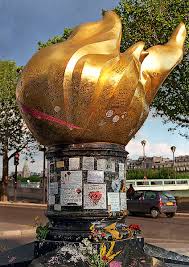 The ritual would be a variation or enactment of the eternal story of Isis, based on the triangle of relationships between Isis and Osiris and Horus. These things are set in motion slowly. There is no hurry and no necessity to complete these plans within any current generation. Seeds are sown, and left to sprout, and grow and take root. It is not so much about laying down a plan as it is creating a field of possibilities. The novel of Arch of Triumph 1945 was written as a conscious attempt to create a story using these archetypes. Paris, in August. Egyptian. Osiris. The Arc de Triomphe as the gate to Hades. Death in a car after travelling along the ritual road aligned to Sirius. Diana. The way in which the author has gone about constructing the character of Joan Madou shows this procecss very clearly, and we will look at that in a coming post. But there is an even clearer and immediate clue which signals to us that the novel/film of Arch of Triumph is very much aware of its direct relationship to this hidden ritual project involving the Arc de Triomphe and the greater Temple of Isis which is Paris. The clue is this: The idea of the Arc de Triomphe was publically announced for the very first time on February 17 1806.
Quote:
This Arch of Triumph was first proposed on February 17, 1806 as a column “dedicated to the glory of the grand Armee,” particularly in honor of the Napoleonic Wars, that would serve as a magnificent entry-way to the nation’s capital. The next day, an Imperial decree was issued for its construction at the site of the former Bastille (prison) de Paris called Place de l’Etoile. In order to enter the Saint-Antoine district of Paris, one would have to pass through this “triumphal arch.”
http://tcnjdoingbusinessineu.wordpre...mes-goetchius/ |
The movie The Arch of Triumph was released February 17, 1948. There is another key date associated with the Arc de Triomphe, and in particular its eternal flame. This was lit on November 11 1918, and has never been extinguished.
Quote:
| Beneath the Arc is the Tomb of the Unknown Soldier from World War I. Interred here on Armistice Day 1920,[14] it has the first eternal flame lit in Western and Eastern Europe since the Vestal Virgins' fire was extinguished in the fourth century. |
The flame was set up November 11 1920. The book Arch of Triumph specifically references this date:  And the movie Joan of Arc was released November 11 1948. Let's just recap: Ancient Roman feast of Torches, held in honour of Diana: August 15Birthday of Napoleon: August 15First Stone laid of Arc de Triomphe: August 15First announcement to the world of the intent to build Arc de Triomphe: February 17Release of movie The Arch of Triumph 1948: February 17 Lighting of Eternal Flame under Arc de Triomphe: November 11Released of movie Joan of Arc 1948 : November 11The event has been taking shape since ancient times. A Temple to Isis was built. It became a great city. A ritual slowly began to take shape. A woman would take on the role of Isis. A royal woman. There would be a connection to Egypt, to a father and a son. She would precede her arrival at the city with a boat journey. In the city, in the temple, at the time when the stars and moon were arranged in the heavens to reflect the events below, a ritual death would take place, related to a journey along the avenue of the Fields of the Dead, via the Gate of the Underworld. Her name will be Diana, and her ritual death will be accompanied by torches, as it was on her feast day in ancient times. She will represent Isis, the goddess of ten thousand names. The book was written, the movie released, the royal heir was born and given the name: Charles, or Free Man.
Quote:
| Charles: The name's etymology is a Common Germanic noun *karlaz meaning "free man", |
The girl was born, her conception planned and timed so that she would be born as the Sun conjoined with Sirius, just as Charles investiture was so timed. She was given the name: Diana, and they couldn't help themselves, Frances. Diana Frances Spencer. France's Diana. Now, they just needed to find an Egyptian father and son.... A famous photo of Diana dancing with John Travolta, why not: 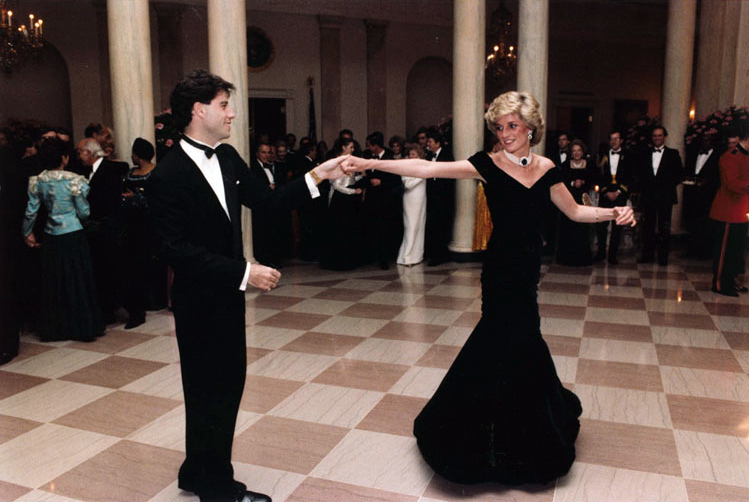 Diana: goddess between the pillars. Chequerboard floor. Saturday Night Fever. Diana: goddess between the pillars. Chequerboard floor. Saturday Night Fever.
Black, white, red, celeste blue... Photo Photo date: November 9, 1985
Last edited by loopDloop; 20 Jan 2013 at 05:41 AM.
|
|
|
|
|
| |
|
|
| |

Evening view, courtyard of the Louvre and I.M. Pei pyramid. (Photographer: Benh Lieu Song.)
Louvre {loov'-ruh} — a French palace and the national art museum of France.
Located in Paris, the Louvre is one of the largest palaces in the world and, as a former residence of the kings of France, one of the most illustrious. It exemplifies traditional French architecture since the Renaissance, and it houses a magnificent collection of ancient and Western art.
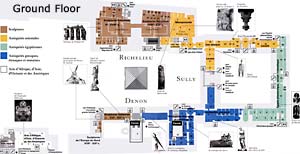 Ground floor diagram, Louvre Museum Ground floor diagram, Louvre MuseumThe Palace
The first Louvre was a fortress built at the beginning of the 13th century by Philip II Augustus to defend the Seine below Paris against the Normans and English. It consisted of a thick cylindrical donjon (dungeon) surrounded by towered walls. This chteau, enlarged and embellished by Charles V in the 14th century, was sacrificed in the 16th century at the end of the reign of Francis I in order to make room for a new Renaissance structure of the same size. Only the west wing and part of the south wing of the projected palace, conceived by the architect Pierre Lescot and decorated with sculptures by Jean Goujon, were finished.
In 1564 Catherine de Médicis had her architect, Philibert Delorme, build a little chteau in a neighboring field to the west called the Tuileries. It was then decided to create a grandiose royal residence by joining the Louvre and the Palais des Tuileries by a series of buildings. The most important is the Grande Galerie built along the Seine in the reign of Henry IV.
| |
|
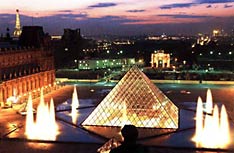
Dusk view of I.M. Pei's pyramid in Louvre courtyard, with Arc du Carrousel in near background. Notice the Place de la Concorde, Arc de Triomphe de l'Etoile, and the Grande Arche de la Défense in far upper right background.
© Jonathan F. Yorck —
All Rights Reserved |
|
| |
In the 17th century Louis XIII and his minister Richelieu extended Lescot's west wing northward by adding the majestically domed Pavillon de l'Horloge (clock pavillion) by Jacques Lemercier and recreating Lescot's building beyond it. Under Louis XIV and his minister Colbert, the Cour Carrée, a great square court, was constructed by Louis Le Vau. The east façade of the east wing was later given a classical colonnade by Le Vau and Claude Perrault. The royal apartments were sumptuously decorated by Charles Le Brun and others, as the Galerie d'Apollon still bears witness. The Louvre was abandoned as a royal residence when Louis XIV moved the court to Versailles in 1682.
After the Revolution of 1789, Napoleon I, later kings, and Napoleon III lived in the Tuileries. The Louvre was used for offices and a museum. Along the Rue de Rivoli, Napoleon I began a wing parallel to that of Henry IV along the Seine. Napoleon III finished the wing, thus closing the great quadrilateral.
A few years later, during the uprising of the Paris Commune in 1871, the Tuileries was burned. Paradoxically, the disappearance of the Tuileries, which had originally brought about the extension of the Louvre, opened the admirable perspective that now stretches from the Arc du Carrousel west through the Tuileries Gardens and the Place de la Concorde to the Place Charles de Gaulle.
| |
|
| |
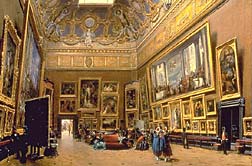
Le Salon Carré, en 1865,
au Musée du Louvre
by Giuseppe Castiglione
Canvas - H 0,69 m ; L 1,03 m
(27"H x 40.5"W) |
| |
In the late 1980s the Louvre embarked upon an aggressive program of renovation and expansion. When the first plans by the Chinese-American architect Ieoh Ming Pei were unveiled in 1984, they included a glass pyramid in the central courtyard that would serve as the museum's main entrance. Despite drawing protests before the fact, since its opening in 1989 the pyramid has proven remarkably effective in accommodating the large numbers of visitors, and has even become a relatively beloved landmark of the city. In November 1993, to mark its 200th anniversary, the museum unveiled the Richelieu wing in the quarters that had been vacated, grudgingly, by the Ministry of Finance in 1989. This expansion, which completed the museum's occupancy of the palace complex, added 230,000 square feet (21,390 sq meters) to the existing 325,000 square feet (30,225 sq meters) of exhibition space, and allowed it to put an additional 12,000 works of art on display in 165 new rooms.
The Museum
In 1793, during the Revolution, the first state museum was opened in the Louvre, consisting of the former royal collections of painting and sculpture. It was enriched temporarily by loot from the Napoleonic wars and then permanently by purchases and gifts, including archaeological finds. More and more specialized divisions were created.
| |
|
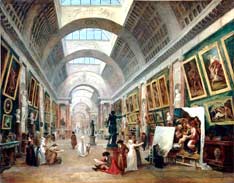
Projet d'aménagement de la Grande
Galerie du Louvre, vers 1789?
by Hubert Robert, 1796
Musée du Louvre |
|
| |
The present Louvre departments include Oriental (ancient Mesopotamian) antiquities; Egyptian antiquities; Greek and Roman antiquities; sculpture from the Middle Ages to modern times; furniture and objets d'art; and paintings representing all the European schools. A section of the museum is devoted to Islamic art.
Universally famous ancient works of art in the Louvre include a statuette of the Sumerian ruler Gudea, a stele bearing Hammurabi's code, an Egyptian painted stone statue of a scribe sitting cross-legged, the Venus de Milo, and the Victory of Samothrace. Among outstanding later works are two marble Slaves by Michelangelo, the treasure of the abbey of St. Denis, and the French crown diamonds. Important paintings include the Pietà of Avignon, Leonardo da Vinci's Mona Lisa, Veronese's immense Wedding at Cana (which was badly damaged in 1992 while being installed in the newly renovated galleries), and Watteau's Embarkation for Cythera.
The school of the Louvre trains curators in history of art and archaeology. Special exhibits are indicated in the Revue du Louvre.
Archaeological Discoveries
Traces of the medieval fortress from which the present day palace originates have been uncovered. Restoration work on the Cour Carrée and the excavation required for construction of the pyramid and the Carrousel area enabled archeological digs to be undertaken, and for the various phases of occupation of the palace and its quarters to be seen.
The architectural structures of the basement will henceforth be included in the visit tours. Thus, it is possible to walk along the moats of the medieval fortress under the Cour Carrée, to pass around the base of the dungeon to get to the Salle Saint-Louis (13th century), or — when going to the underground carpark — to walk along the so-called Charles V Moats.
Amongst the items discovered during these digs, one of the most remarkable is a parade helmet belonging to Charles VI, which was reconstituted from the one hundred and sixty-nine fragments which were found scattered about. It is on display in the Salle Saint-Louis (Sully Wing).
Admission
For those who plan to visit many monuments and museums during your séjour à Paris, Discover France offers the "Museums and Monuments Card" (Carte Musées et Monuments), valid for unlimited visits and priority access to approximately 70 locations in — and near — Paris. It can also be purchased at the Paris Tourist Office (127, avenue des Champs-Elysées), at its reception offices in certain Paris train stations, at the Eiffel Tower, in the major Métro stations, or at most of the 70 attractions. Cards are available in denominations valid for either one, three, or five consecutive days.
http://www.discoverfrance.net/France/Paris/Museums-Paris/Louvre.shtml |
|
|
|
 Primeira Primeira
 Anterior
584 a 598 de 613
Seguinte Anterior
584 a 598 de 613
Seguinte Última
Última
|
|
| |
|
|
©2025 - Gabitos - Todos os direitos reservados | |
|
|











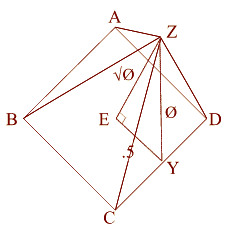



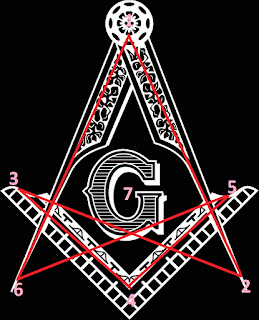
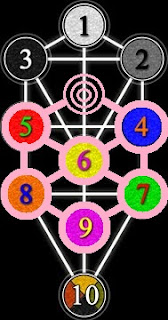

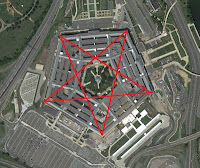
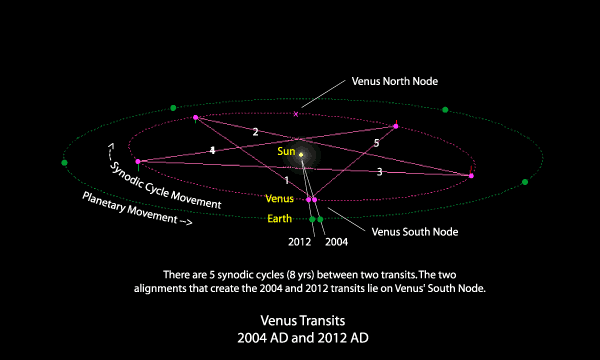






















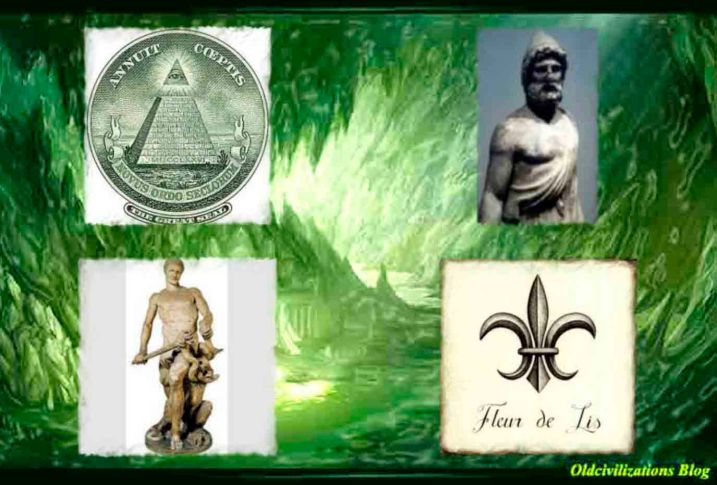





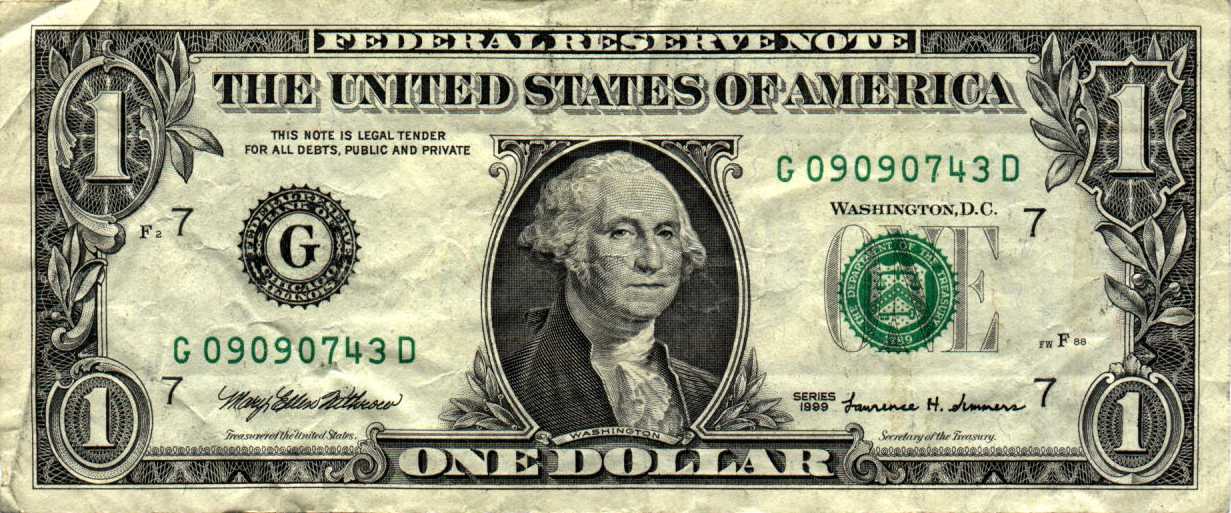
.jpg)






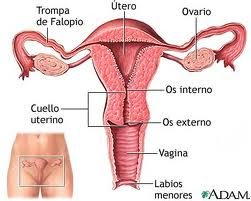







 )
)





